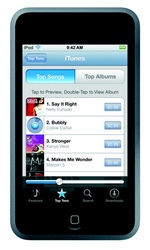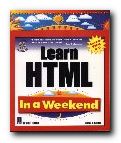milestones in IT development
1617. Scottish mathematician John Napier invents logarithms and constructs set of ‘rods’ or ‘bones’ for performing mechanical calculations.
1642. French mathematician and philosopher Blaise Pascal constructs and demonstrates a mechanical adding machine.
1666. German mathematician Gottfried Leibniz writes on the value of binary numbers in De Arte Combinatore.
1694. Leibniz constructs first mechanical device to successfully perform all four arithmetic functions (addition, subtraction, multiplication, and division).
1804. French engineer Joseph Jacquard develops punched card system for programming looms – weaving cloth to match a set of commands. Holes in the cards correspond to binary Open/Closed. This system of in-putting data into machines persists until 1960s
1823. English engineer Charles Babbage invents The Difference Engine – the first mechanical computer.
1834. Babbage designs and starts to build ‘Analytic Engine’ – Augusta Lovelace [Byron’s daughter] writes the first computer program.
1847. English mathematician George Boole publishes ‘Mathematical Analysis of Logic’ and uses the ideas of binary numbering to fuse logic with algebra.
1925. American engineer Vannevar Bush designs and builds the first multipurpose mechanical analogue computer.
1936. English mathematician Alan Turing puts together binary notation and Boolean logic to produce tests for mathematical probability. He proposes ‘Universal Turing Machine’ – a theoretical construct which contains all the logical and mathematical elements of what would be a modern analogue computer.
1940. American electrical engineer Claude Shannon uses Boolean logic to optimise relay-switching circuits in his MA thesis at MIT.
1945. Vannevar Bush publishes ‘As We May Think’ in Atlantic Monthly, outlining what we now call ‘hypertext’. Hungarian mathematician John van Neumann conceives the first stored computer program.
1948. First computer using stored program built at Manchester University. Turing’s proposal for a ‘Turing Computing Engine’.
1962. ‘Spacewar’ – first graphical computer game.
1968. Douglas Englebart demonstrates ‘windows’ and mouse in San Francisco.
1969. Myron Krueger develops first prototypes of virtual reality.
1974. Ted Nelson self-publishes Computer Lib and Dream Machines outlining his ideas on hypertext in paper form. Standard General Markup Language (SGML) first invented as a universal publishing language.
1975. Bill Gates and Paul Allen found Microsoft
1978. Philips and Sony introduce the laserdisk (analogue video)
1981. IBM introduces the first PC
1983. Microsoft launches its first version of Windows. Myron Krueger Artificial Reality
1984. Apple-Mac launched – DNS (Domain Naming System) introduced – Number of Internet hosts reaches 1,000
1985. Commodore Amiga launched (powerful graphics facility) – First Amstrad released in UK.
1987. Ted Nelson’s Literary Machines describes Project Xanadu – his scheme for electronic commerce and micro-payments. Hypercard (hypertext program) added to the Apple-Mac. Number of Internet hosts reaches 10,000
1989. Tim Berners-Lee develops Hypertext Markup Language (HTML) and the World Wide Web at CERN in Geneva. Howard Rheingold’s Tools for Thought. Number of Internet hosts reaches 100,000
1990. Archie (search tool) released by McGill University. Microsoft launches Windows 3.0
1991. CERN launches the World Wide Web. Howard Rheingold’s Virtual Reality – an early work on the sociology of computer users. Gopher (search tool) released by University of Minnesota.
1992. Veronica (search tool) released by University of Nevada. Number of Internet hosts reaches 1,000,000
1993. Marc Andreessen, NCSA, and University of Illinois develop Mosaic – the first graphical interface to the WWW. A recorded 341,634 per cent growth rate in Web traffic.
1994. First eCommerce (shopping malls and banks) arrive on the Web, and Web traffic second only to FTP-data transfers. Linux 1.0 open source operating system released.
1995. First search engines developed. Sun launches JAVA programming.
1996. Browser wars begin between Netscape and Microsoft. Web censorship in China, Saudi Arabia, Singapore, Germany, and New Zealand.
1998. Extensible Markup Language (XML) introduced. Dotcom boom takes off. Estimated size of Web – 320 million pages.
2000. Dotcom crash begins (April). Size of Web estimated at one billion pages.
2003. Google claims a searchable database of 3.6 billion web pages.
2005. Google claims a searchable database of 8.2 billion web pages.
2006. Google claims a searchable database of 25 billion web pages.
2008. Google claims a searchable database of 1.0 trillion (1,000,000,000,000) web pages.
© Roy Johnson 2009
More on technology
More on digital media
More on online learning
More on computers



 And nothing can go drastically wrong, so you don’t need to worry. It’s no wonder that these devices have become popular so quickly. Quite apart from the ultra-cool design, you can download games, extras, and software novelties with no trouble at all. Many of them are completely free or amazingly cheap. For instance, the ‘Brushes’ graphic design program used to produce
And nothing can go drastically wrong, so you don’t need to worry. It’s no wonder that these devices have become popular so quickly. Quite apart from the ultra-cool design, you can download games, extras, and software novelties with no trouble at all. Many of them are completely free or amazingly cheap. For instance, the ‘Brushes’ graphic design program used to produce 
 And nothing can go drastically wrong, so you don’t need to worry. It’s no wonder that these devices have become so popular so quickly. Quite apart from the ultra-cool design, you can download games, extras, and software novelties with no trouble at all. Many of them are completely free or amazingly cheap. For instance, the ‘Brushes’ graphic design program used to produce
And nothing can go drastically wrong, so you don’t need to worry. It’s no wonder that these devices have become so popular so quickly. Quite apart from the ultra-cool design, you can download games, extras, and software novelties with no trouble at all. Many of them are completely free or amazingly cheap. For instance, the ‘Brushes’ graphic design program used to produce 



